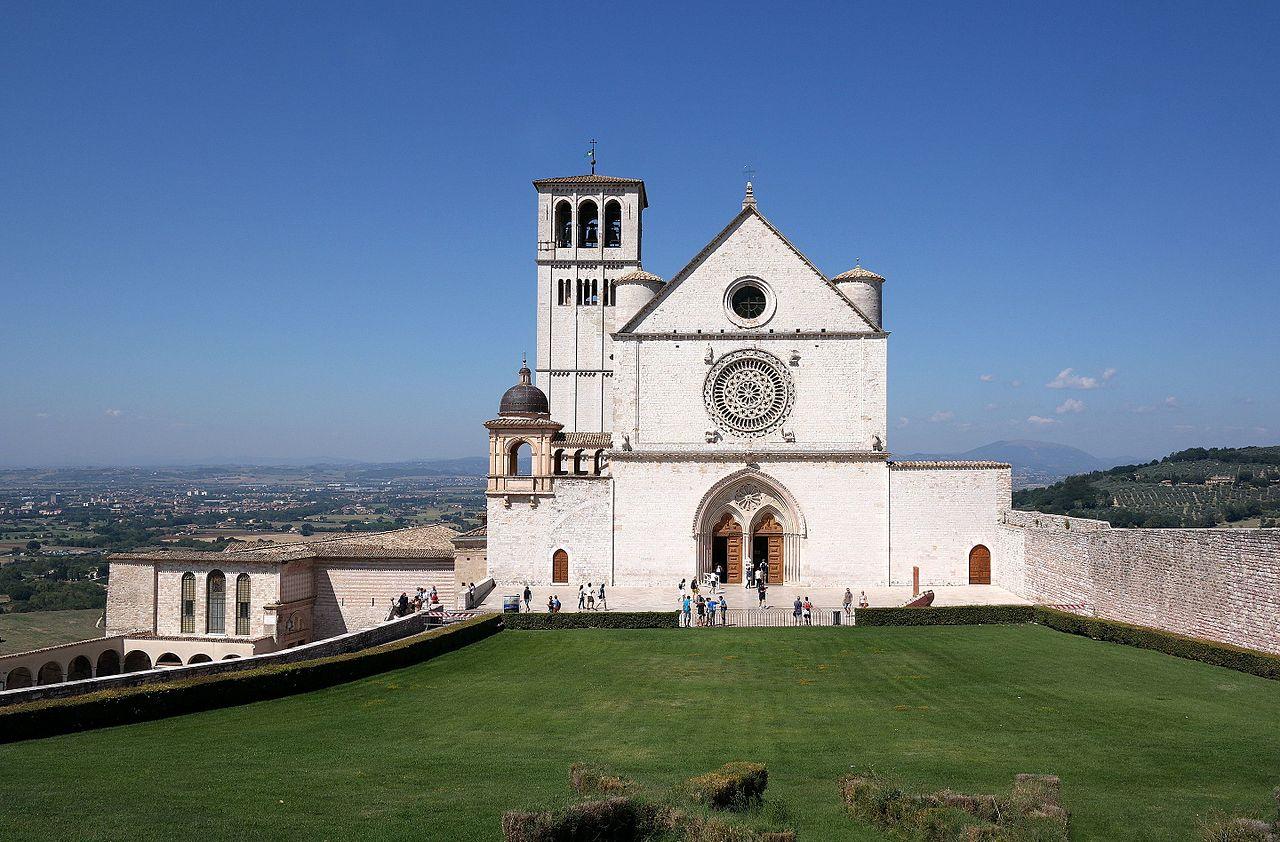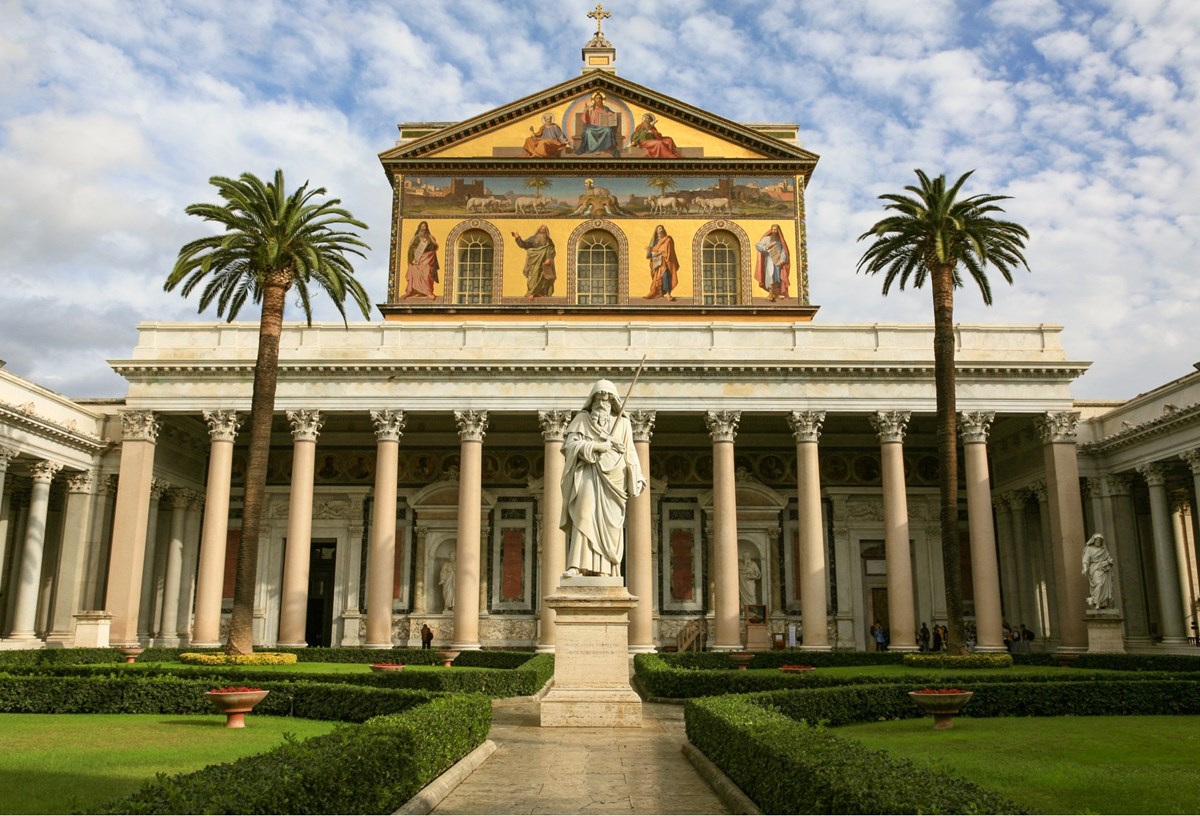Home>Arts and Culture>Where Is St. Andrews Cathedral


Arts and Culture
Where Is St. Andrews Cathedral
Published: February 17, 2024
Peter Smith, Editorial Director at Christian.net, combines deep insights into faith, politics, and culture to lead content creation that resonates widely. Awarded for his contributions to religious discourse, he previously headed a major organization for religious communicators, enhancing dialogue on faith's societal impacts.
Discover the rich history and stunning architecture of St. Andrews Cathedral, a must-see destination for arts and culture enthusiasts. Explore the spiritual and artistic significance of this iconic landmark.
(Many of the links in this article redirect to a specific reviewed product. Your purchase of these products through affiliate links helps to generate commission for Christian.net, at no extra cost. Learn more)
Table of Contents
Introduction
St. Andrews Cathedral, a magnificent testament to medieval architecture and religious significance, stands as a revered landmark in the historic town of St. Andrews, Scotland. This awe-inspiring structure, though now in ruins, continues to captivate visitors with its grandeur and rich history. As we delve into the story of St. Andrews Cathedral, we will uncover the fascinating tale of its rise, fall, and enduring legacy.
The cathedral, dedicated to St. Andrew, the patron saint of Scotland, was once the largest church in Scotland and a center of religious life. Its construction commenced in 1160, and for centuries, it served as a place of worship, pilgrimage, and scholarly pursuits. The cathedral's significance extended beyond its religious role, as it also played a pivotal part in the cultural and political landscape of medieval Scotland.
Despite its eventual decline and the ravages of time, the remnants of St. Andrews Cathedral continue to evoke a sense of wonder and reverence. The weathered stone walls and towering arches stand as a testament to the craftsmanship and vision of the artisans and builders who dedicated themselves to its creation.
As we embark on a journey to explore the history, architecture, and allure of St. Andrews Cathedral, we will uncover the layers of its past and the enduring impact it has left on the town of St. Andrews and beyond. Join us as we unravel the mysteries and marvels of this iconic structure, and discover the profound significance it holds in the hearts of those who visit its hallowed grounds.
Read more: Where Is St. George’s Cathedral
History of St. Andrews Cathedral
The history of St. Andrews Cathedral is a tapestry woven with threads of faith, ambition, and resilience. Its story begins in the 12th century when the construction of this grand edifice was initiated. Commissioned by Bishop Robert, the cathedral was dedicated to St. Andrew, the patron saint of Scotland, and was envisioned to be a beacon of religious devotion and architectural splendor.
The cathedral's construction spanned several decades, and its completion marked a significant milestone in the ecclesiastical landscape of Scotland. Upon its consecration in 1318, St. Andrews Cathedral stood as the largest church in Scotland, a testament to the power and influence of the medieval church.
Throughout its illustrious history, the cathedral served as a hub of religious activity, drawing pilgrims from far and wide to pay homage to St. Andrew and seek spiritual solace within its hallowed walls. It also played a pivotal role in the academic realm, housing a prestigious school that nurtured the minds of scholars and theologians.
However, the cathedral's fate took a tumultuous turn during the Scottish Reformation in the 16th century. The winds of change swept through the land, leading to the abandonment and subsequent desolation of the once-majestic structure. The ravages of time and the impact of religious and political upheavals left the cathedral in ruins, yet its legacy endured.
Today, the remnants of St. Andrews Cathedral stand as a poignant reminder of its former glory, inviting visitors to contemplate the passage of time and the enduring spirit of human endeavor. The weathered stone walls and graceful arches bear witness to the resilience of the human spirit and the enduring legacy of this iconic landmark.
As we stand amidst the ruins of St. Andrews Cathedral, we are transported through the annals of time, where the echoes of devotion and grandeur still resonate. The history of this revered structure serves as a testament to the indomitable nature of human aspiration and the enduring legacy of faith and architectural prowess.
Architecture of St. Andrews Cathedral
The architecture of St. Andrews Cathedral stands as a testament to the ingenuity and grandeur of medieval craftsmanship. As one approaches the site of the cathedral, the remnants of its once-majestic structure evoke a sense of awe and wonder. The cathedral, built in the Romanesque and Gothic styles, boasted impressive dimensions, with a length of 391 feet, making it the largest church in Scotland at the time of its completion.
The cathedral's design incorporated intricate details and ornate embellishments, reflecting the reverence and devotion of its creators. The soaring arches, delicate tracery, and imposing towers spoke to the ambition and skill of the artisans who dedicated themselves to its construction. The west front, adorned with elaborate carvings and sculptures, served as a visual symphony of religious iconography, inviting pilgrims and worshippers into its sacred embrace.
The interior of the cathedral, though now in ruins, offers glimpses of its former splendor. The nave, with its lofty columns and graceful rib vaults, once resonated with the harmonious chants of the faithful. The intricate stained glass windows, now faded with time, once bathed the interior in a kaleidoscope of colors, infusing the sacred space with an ethereal glow.
The cathedral precinct, encompassing the cloister and associated buildings, further exemplifies the architectural prowess of the medieval craftsmen. The cloister, with its elegant arcades and tranquil ambience, provided a place for contemplation and scholarly pursuits. The chapter house, a place of assembly and deliberation, bore witness to the intellectual and administrative activities that shaped the cathedral's legacy.
As we stand amidst the weathered remnants of St. Andrews Cathedral, we are transported back in time, where the echoes of devotion and architectural brilliance still resonate. The architecture of this revered structure serves as a testament to the enduring legacy of human creativity and the timeless allure of medieval craftsmanship. Each weathered stone and weather-beaten arch tells a story of ambition, faith, and the enduring pursuit of architectural excellence.
Location of St. Andrews Cathedral
Nestled amidst the picturesque town of St. Andrews, Scotland, the location of St. Andrews Cathedral exudes an aura of tranquility and historical significance. Situated on the east coast of Fife, overlooking the vast expanse of the North Sea, the cathedral's setting is a harmonious blend of natural beauty and cultural heritage.
The cathedral's strategic placement within the town reflects its integral role in the medieval landscape, where it stood as a beacon of faith and a symbol of spiritual devotion. Its proximity to the rugged coastline and the rolling hills of Fife creates a captivating backdrop, inviting visitors to immerse themselves in the timeless charm of this historic site.
The ruins of St. Andrews Cathedral are nestled within the grounds of the Cathedral Museum, offering a serene and contemplative space for visitors to explore. The expansive green lawns and ancient gravestones surrounding the cathedral create an atmosphere of reverence and reflection, inviting visitors to ponder the passage of time and the enduring legacy of this iconic landmark.
As one stands amidst the weathered remnants of the cathedral, the whispers of history and the echoes of devotion permeate the air, transporting visitors to a bygone era where the cathedral stood as a testament to human aspiration and spiritual reverence.
The location of St. Andrews Cathedral not only serves as a testament to its historical significance but also offers a tranquil retreat for those seeking to connect with the rich tapestry of Scotland's past. The gentle sea breeze and the timeless beauty of the surrounding landscape infuse the site with a sense of serenity, inviting visitors to embark on a journey of discovery and contemplation.
In the heart of St. Andrews, the location of the cathedral stands as a poignant reminder of the enduring spirit of human endeavor and the timeless allure of Scotland's cultural heritage. It beckons travelers and history enthusiasts alike to immerse themselves in its storied past and embrace the profound sense of history that permeates the very essence of this remarkable site.
How to Get to St. Andrews Cathedral
To embark on a journey to the historic St. Andrews Cathedral, travelers are presented with a myriad of enchanting routes that lead to this revered site. Situated in the charming town of St. Andrews, Scotland, the cathedral beckons visitors to traverse the picturesque landscapes and immerse themselves in the rich tapestry of history and culture. Whether arriving from nearby towns or distant cities, reaching St. Andrews Cathedral is an adventure in itself, offering a delightful blend of scenic vistas and historical intrigue.
Read more: What Did St. Andrews Cathedral Look Like
By Car:
For those traveling by car, the journey to St. Andrews Cathedral unfolds amidst the breathtaking Scottish countryside. From Edinburgh, a scenic drive along the A90 and A91 routes leads to the town of St. Andrews. Upon arrival, visitors can navigate the town's winding streets and follow the signs directing them to the cathedral. Ample parking facilities are available near the cathedral, allowing for convenient access to this historic site.
By Public Transport:
Travelers opting for public transport can embark on a train journey from Edinburgh to Leuchars, the nearest railway station to St. Andrews. From Leuchars, a short bus ride or taxi journey transports visitors to the heart of St. Andrews, where the cathedral awaits. The well-connected public transport network ensures seamless access to this iconic landmark, allowing visitors to savor the anticipation of their impending encounter with the cathedral.
On Foot:
For those seeking a leisurely and immersive experience, a stroll through the town of St. Andrews presents an enchanting approach to the cathedral. As visitors traverse the cobbled streets and meandering pathways, the town's timeless charm unfolds, leading them to the sacred grounds of the cathedral. The leisurely pace allows for moments of serendipitous discovery, as the town's historic sites and quaint shops beckon travelers to savor the essence of St. Andrews.
Guided Tours:
Enthusiasts of history and architecture may opt for guided tours that offer insightful narratives and a deeper understanding of the cathedral's significance. Knowledgeable guides lead visitors through the town's storied streets, weaving tales of ancient lore and historical milestones, culminating in an awe-inspiring encounter with St. Andrews Cathedral.
As travelers embark on their chosen path to St. Andrews Cathedral, each route unfolds as a prelude to the captivating experience that awaits. The journey to this iconic site is imbued with the spirit of exploration and the allure of Scotland's cultural heritage, inviting visitors to partake in a timeless odyssey through the annals of history.
Read more: Where Is St. Mark’s Cathedral Located
Nearby Attractions to St. Andrews Cathedral
As visitors bask in the timeless allure of St. Andrews Cathedral, they are presented with a myriad of captivating attractions that beckon them to explore the rich tapestry of history and culture that envelops the town of St. Andrews, Scotland. From ancient landmarks to scenic vistas, the nearby attractions offer a delightful blend of historical intrigue and natural splendor, inviting travelers to embark on a journey of discovery and contemplation.
St. Andrews Castle
Nestled along the rugged coastline, St. Andrews Castle stands as a formidable testament to medieval architecture and historical significance. The imposing ruins of the castle, once a seat of power and a symbol of authority, offer visitors a glimpse into Scotland's turbulent past. The underground mine and counter-mine, remnants of past conflicts, evoke a sense of intrigue and adventure, inviting visitors to delve into the castle's storied history.
St. Andrews Links
For enthusiasts of the ancient game of golf, the St. Andrews Links present an unparalleled opportunity to traverse the hallowed grounds where the sport's legacy was born. The Old Course, with its undulating fairways and iconic landmarks, offers a captivating experience for golf aficionados and history enthusiasts alike. The timeless allure of the links, set against the backdrop of the North Sea, creates a mesmerizing tableau that speaks to the enduring spirit of this revered sport.
St. Andrews Botanic Garden
Amidst the verdant landscapes of St. Andrews, the Botanic Garden stands as a tranquil oasis, inviting visitors to immerse themselves in the beauty of nature. The diverse collection of plants and flowers, carefully curated within the garden's grounds, offers a sensory journey through the world's botanical wonders. The serene ambience and captivating displays create a harmonious retreat, allowing visitors to revel in the splendor of the natural world.
Read more: Where Is St. Mary’s Cathedral
West Sands Beach
The sweeping expanse of West Sands Beach, immortalized in the iconic film "Chariots of Fire," offers a picturesque setting for leisurely strolls and moments of contemplation. The golden sands and azure waters create a mesmerizing backdrop, inviting visitors to savor the tranquility of the coastline. Whether basking in the glow of a radiant sunset or relishing the invigorating sea breeze, West Sands Beach presents an idyllic escape for those seeking solace amidst nature's grandeur.
The Museum of the University of St. Andrews
For aficionados of academia and scholarly pursuits, the Museum of the University of St. Andrews offers a captivating journey through the town's intellectual heritage. The museum's diverse collections, ranging from rare artifacts to scientific marvels, provide a window into the university's illustrious past and its enduring contributions to the realms of knowledge and discovery.
As visitors immerse themselves in the allure of St. Andrews Cathedral and its surrounding attractions, they are enveloped in a tapestry of history, culture, and natural beauty. Each site beckons travelers to partake in a timeless odyssey through the annals of Scotland's storied past, creating an unforgettable tapestry of exploration and enlightenment.
Conclusion
As we draw the curtains on our exploration of St. Andrews Cathedral, we are left with a profound appreciation for the enduring legacy of this iconic landmark. The cathedral, with its rich history, awe-inspiring architecture, and tranquil setting, stands as a testament to the indomitable spirit of human creativity and spiritual devotion. From its humble beginnings in the 12th century to its eventual decline and transformation into a revered historical site, St. Andrews Cathedral has woven a tapestry of stories that continue to captivate the hearts and minds of visitors from around the world.
The history of St. Andrews Cathedral, steeped in faith, ambition, and resilience, offers a glimpse into the medieval era, where the cathedral stood as a beacon of religious fervor and scholarly pursuits. Its rise to prominence as the largest church in Scotland and its subsequent decline during the Scottish Reformation serve as poignant chapters in the annals of Scotland's cultural heritage. The echoes of devotion and grandeur still resonate amidst the weathered remnants of the cathedral, inviting visitors to contemplate the passage of time and the enduring impact of this revered structure.
The architecture of St. Andrews Cathedral, with its Romanesque and Gothic influences, speaks to the ingenuity and grandeur of medieval craftsmanship. The intricate details, soaring arches, and graceful tracery bear witness to the dedication and skill of the artisans who brought the cathedral to life. Each weathered stone and weather-beaten arch tells a story of ambition, faith, and the enduring pursuit of architectural excellence, leaving an indelible imprint on the landscape of St. Andrews.
The location of St. Andrews Cathedral, nestled amidst the timeless charm of the town and overlooking the rugged coastline, creates a harmonious backdrop for visitors to immerse themselves in the cathedral's storied past. The tranquil setting invites contemplation and reflection, offering a serene retreat for those seeking to connect with the rich tapestry of Scotland's history and cultural heritage.
As visitors explore the nearby attractions, from the formidable ruins of St. Andrews Castle to the captivating allure of St. Andrews Links and the Botanic Garden, they are enveloped in a tapestry of history, culture, and natural beauty. Each site beckons travelers to partake in a timeless odyssey through the annals of Scotland's storied past, creating an unforgettable tapestry of exploration and enlightenment.
In conclusion, St. Andrews Cathedral stands as a testament to the enduring spirit of human endeavor and the timeless allure of Scotland's cultural heritage. Its weathered remnants and tranquil surroundings invite visitors to embark on a journey through the annals of history, where the echoes of devotion and architectural brilliance continue to resonate. As we bid farewell to this iconic landmark, we carry with us the profound sense of history and wonder that permeates the very essence of St. Andrews Cathedral.












